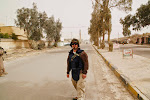Have you ever lost a beloved pet? My 13 year old Australian border collie Jazz died Friday, January 22nd in my home office after a 7 week fight against advanced Lyme Disease (a tick-born illness possible after 12+ hours of prolonged contact with an infected tiny deer tick.) She was my constant companion for 12 years and hiked 1000's of miles together.
Jazz defended me from numerous black bear interactions; a man in the Raven Cliffs Wilderness wearing a floor-length white wedding dress (I have a witness!); and hiked with all our water and her food without complaint (max 15 lbs per trip,) and was a devoted friend. My friend Tonya Cox stated that the sharp pain of the loss of a pet is a small price to pay for their gift of unconditional love. I could not have said it better. Pets (especially dogs) ask very little from us in exchange for their devotion and unconditional love.
As the principal photographer for the Georgia Veterinary Medical Association's annual Service Awards for over five years (and pet owner), I would like to make suggestions for photographing animals. There are definitely tricks of this trade and I would like to share some of them with you.
First, take as many photos of your pet as you can for practice, especially if you have a digital camera (which allows you to "practice" for nothing as you only print the images you want.) You can view your images on the computer and delete unsuccessful attempts if using digital.
You should try to get down to the same or lower level than your pet when you take their picture. If you shoot down on something (overhead view), that perspective minimizes the importance of your subject. So, work on their level and fill 80% of the viewfinder frame/LCD with the pet when you compose the shot.
Get the pet's owner or other assistants to stand behind you when setting up for the shot of the pet. The pet needs to have a single focal point (the photographer) to get the best shot in most cases.
If you need to do so, capture the pet's attention with a squeaky toy, teaser or treat when you are ready to take the photo. Digital SLR's are best at capturing pet photos as they have no "lag time" between pressing the shutter button and capturing the image.
In an inside setting when you do not have studio strobes or monolights, try bouncing on-camera flash from a neutral colored surface (wall or ceiling,) or white balance your camera for available light if sufficiently bright. Outside, take advantage of dramatic light and backgrounds to isolate the pet and the pet's eyes. Eyes are the "key" for pet photography in a relaxed subject. Try to get well focused images of the animal playing with the owner or by itself if possible. Adjust your ISO/ASA speed to a higher, more sensitive light setting to raise your shutter speed if you need to do so to minimize motion blur if necessary.
I have had the honor of creating portraits of many animals in their first and/or last portrait session(s). Be conscious of the limitations of the pet and their human friends' personality, wishes, and photographic goals. Experiment after you get "the" shot, not before. The pet may only cooperate for a few minutes; the weather or light may change; or the owner may have time limitations. If your session is the pet's "last" photo session, there will be no re-takes! The true professional always gets the shot right the first time, and does not rely on "fixing" it later on the computer. Remember, garbage in - garbage out.
Call or email me for any questions regarding photography techniques. I will do my best to assist in any way possible based upon my schedule and the urgency of your request. Here is a link to my website: http://allyouneedphoto.samsbiz.com
Sunday, January 24, 2010
Subscribe to:
Post Comments (Atom)




No comments:
Post a Comment